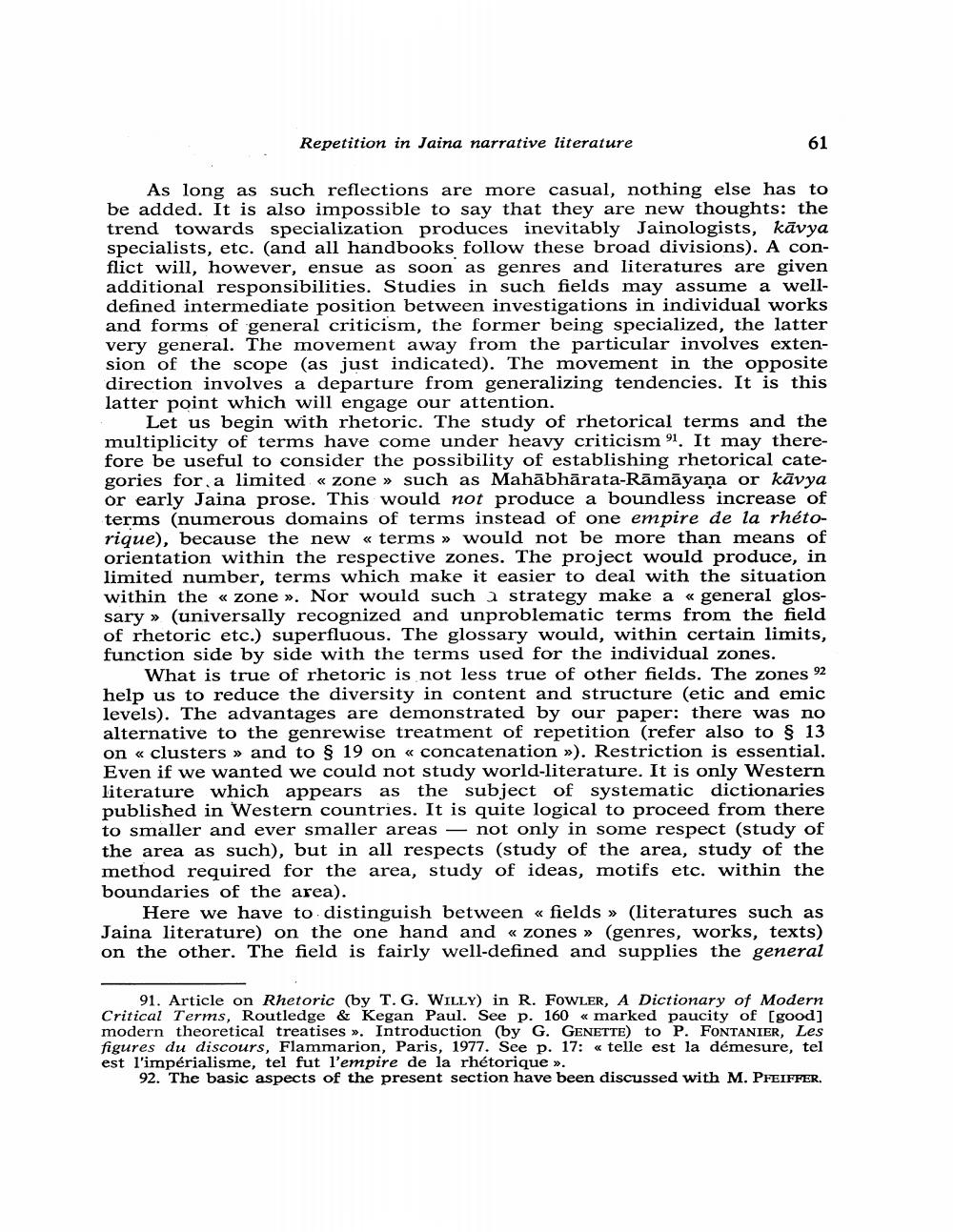________________
Repetition in Jaina narrative literature
61
As long as such reflections are more casual, nothing else has to be added. It is also impossible to say that they are new thoughts: the trend towards specialization produces inevitably Jainologists, kävya specialists, etc. (and all handbooks follow these broad divisions). A conflict will, however, ensue as soon as genres and literatures are given additional responsibilities. Studies in such fields may assume a welldefined intermediate position between investigations in individual works and forms of general criticism, the former being specialized, the latter very general. The movement away from the particular involves extension of the scope (as just indicated). The movement in the opposite direction involves a departure from generalizing tendencies. It is this latter point which will engage our attention.
«
Let us begin with rhetoric. The study of rhetorical terms and the multiplicity of terms have come under heavy criticism "1. It may therefore be useful to consider the possibility of establishing rhetorical categories for a limited << zone » such as Mahabharata-Rāmāyaṇa or kavya or early Jaina prose. This would not produce a boundless increase of terms (numerous domains of terms instead of one empire de la rhétorique), because the new « terms » would not be more than means of orientation within the respective zones. The project would produce, in limited number, terms which make it easier to deal with the situation within the << zone ». Nor would such a strategy make a « general glos(universally recognized and unproblematic terms from the field of rhetoric etc.) superfluous. The glossary would, within certain limits, function side by side with the terms used for the individual zones.
What is true of rhetoric is not less true of other fields. The zones 92 help us to reduce the diversity in content and structure (etic and emic levels). The advantages are demonstrated by our paper: there was no alternative to the genrewise treatment of repetition (refer also to § 13 on << clusters >> and to § 19 on «< concatenation »>). Restriction is essential. Even if we wanted we could not study world-literature. It is only Western literature which appears as the subject of systematic dictionaries published in Western countries. It is quite logical to proceed from there to smaller and ever smaller areas not only in some respect (study of the area as such), but in all respects (study of the area, study of the method required for the area, study of ideas, motifs etc. within the boundaries of the area).
Here we have to distinguish between << fields » (literatures such as Jaina literature) on the one hand and « zones » (genres, works, texts) on the other. The field is fairly well-defined and supplies the general
91. Article on Rhetoric (by T. G. WILLY) in R. FOWLER, A Dictionary of Modern Critical Terms, Routledge & Kegan Paul. See p. 160 « marked paucity of [good] modern theoretical treatises ». Introduction (by G. GENETTE) to P. FONTANIER, Les figures du discours, Flammarion, Paris, 1977. See p. 17: « telle est la démesure, tel est l'impérialisme, tel fut l'empire de la rhétorique »>.
92. The basic aspects of the present section have been discussed with M. PFEIFFER.




